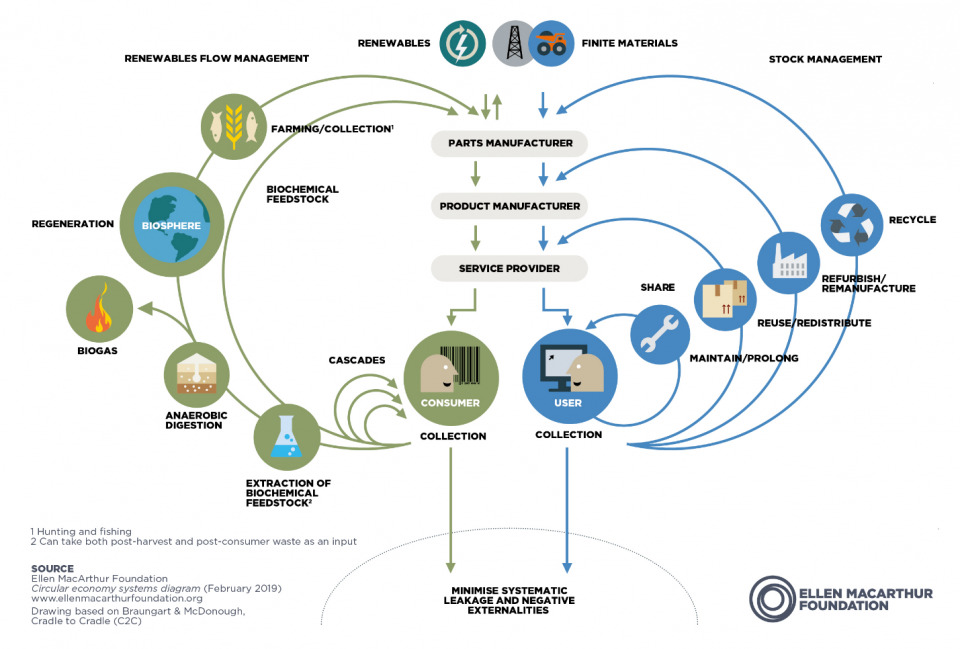Circular
A circular economy refers to the many stages that a consumer item undergoes throughout its life cycle: design, creation and production, distribution—and most importantly with emphasis on its cyclical nature—recycling and upcycling. Each step in the circular economic model embraces a conscious approach to style, living and consumerism that champions sustainable business models and environmental consciousness above fast fashion and mass production. According to the US Environmental Protection Agency, “A circular economy reduces material use, redesigns materials to be less resource intensive, and recaptures “waste” as a resource to manufacture new materials and products.” As is explored below, key aspects of a circular economy include thrifting and vintage shopping, donation platforms and utilization of recycled materials. At its core, a circular economy directly calls into question the harmful repercussions of the pervasive fast fashion economies that have rapidly spread internationally as a result of globalization.
